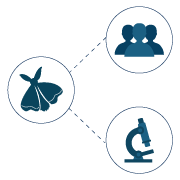Abstract
We report the first observation of viable conjoined twins of marbled crayfish Procambarus virginalis Lyko, 2015 during postembryonal development. Two cases of hatched juveniles were identified incidentally among normal hatchlings from eggs of laboratory-stocked marbled crayfish during an experiment unrelated to the observation. In the first case, each twin had its own anteroposterior body axis with dorsal adhesion in the cephalothorax region, referring to conjoined twins pattern duplicitas completa. They lived for 37 days post-hatch in the laboratory and survived moulting into the third postembryonal stage. The second case involved conjoined twins with unequal-sized embryos that died before the first moulting. Despite the rarity of the observation, the two cases occurred close in time and among a relatively low number of eggs, suggesting that the frequency of conjoined twins should be experimentally verified, as marbled crayfish could represent a promising model for its study.
Keywords: None provided.

_cover.jpg)











